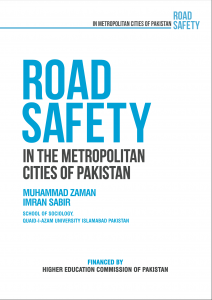Capital Development Authority is planning to enroute 30 electric busses on more than dozen routes of the capital. These busses will be operated by National Radio and Telecommunication Corporation NRTC. CDA is supposed to pay NRTC an amount of 306- 333 PKR per Kilometre as per the agreement. Initially these busses will cover the long routes like Aab Para to Tramari Chowk, I-16 to 26 Number Chungi, Nilor to Khana Pull, Pirwadai Chowk to Faizabad. This seems to be a great endeavour at the part of CDA, provision of Al loaded electric busses could be a great step to abridge with the international standards of public transport system in Islamabad. These Al supported busses will facilitate the passengers in many innovative aspects. They may provide the facility of smart journey planning, route mapping, journey cost calculation etc. It has been highly appreciated by many circles in the town, and CDA is highly credited to make efforts to upgrade the lifestyle of the residents of the capital. Though the intellectual coterie has its own multiple reservations in this regard.
The very first question that raises here is that how a developing country like Pakistan where the economy is about to breath its last can spend a big fortune for this luxury. Swaying industry and shaking agriculture that has been failed to meet the needs of its population has already shattered the annual GDP. Instead of manufacturing local economical vehicles like neighbouring countries. This step will not be considered a wise decision. Import of such overpriced busses seems to buy a white elephant for a starving household where basic needs are at a stake. At the stage when the economic instability is at its peak and the warning of default is around the corner again and again. Spending a heavy amount on vehicles that can be manufactured locally will not be welcomed. Local production will not only be cost effective but will also develop industry, will generate employment opportunities and will strengthen the economy. Though, if we overlook the purchasing cost of the imported vehicles the next question is the supply of electricity to run the busses. The country is already facing the ferocious deficiency of power: trade and industry are dashed to ground due to scarce power supply. A large number of industrial units have been jammed due to power shortage. Long hours of power failure in rural areas have badly affected the agriculture Hiking prices of petroleum products in the international markets have directly affected the manufacturing cost of electricity. In this situation many developed countries in Europe have not espoused this mode of travelling because of its running cost. In such circumstances it certainly does not seem to be a far-sighted decision for a developing country with a dwindling economy.
The other side of the picture is more intricate and labyrinth. Apparently, the myth behind switching to hybrid vehicles is that they are ecofriendly as they do not use fossil fuel that emits carbon when consumed. The ironical aspect is that the hybrid or electric vehicles are supposed to reduce the carbon emission that fossil fuel produces. Though the reality is contrary to it, these vehicles are powered by lithium-ion batteries that cause more displacement and Carbon dioxide emission as compared to the AA battery powered vehicles. Similarly, the disposal of lithium-ion batteries after the completion of their life cycle is another question for the environment. The environmental impact of lithium-ion batteries take place through the process of mining materials and the production of fossil fuels while their manufacturing. Generally, it ranges from 40-200kg per KWH while the carbon footprints of an AA battery are nearly 0.107 kilogram of CO2-eq for each AA battery.
These are re-chargeable batteries and produce heat every time they are charged, mild carelessness in this regard can cause heavy damages. Excessive use of lithium-ion batteries directly affects the atmospheric temperature. The toxicity of the battery is a great threat to the health of all living beings including the flora fauna of the vicinity that keeps the balance in the Eco cycle. They are highly inflammable as they contain electrolyte fluids that often catch fire while charging. Many accidents are reported when the batteries burst resulting heavy fire and it happens when the battery is over charged, over discharged or over heated. Overage batteries are at higher risks. The fire caused by lithium-ion is very difficult to control as heavy chemical reactions are involved in it. Disposal of these batteries is another headache as a complicated mechanical and technical process is required for their disposal. These batteries cannot be disposed like ordinary trash. Wrong disposal practices or miss handling of the chemicals can create fatal accidents and adverse effects on fertility of soil and human health.
Keeping in view the above-mentioned realities and their effects one needs to rethink about the purchase of EVs. The authorities should reconsider the matter and should switch to production of local vehicles in accordance with the local circumstances. That is the need of the hour.
The Disguised Jeopardy


